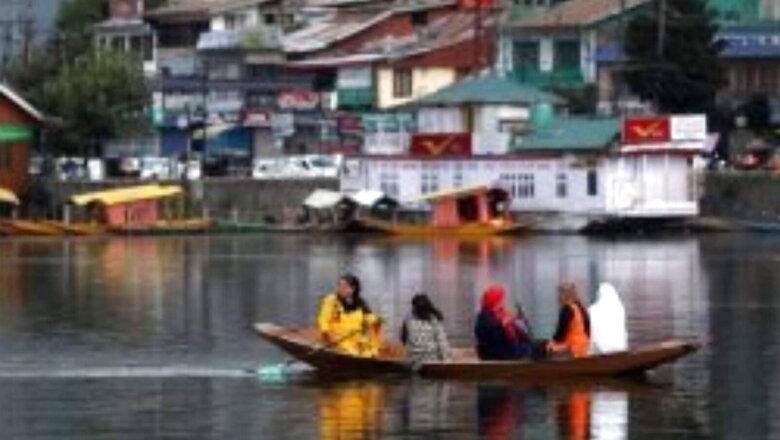
views
Culture, they say, is the hallmark of a civilisation and the culture resides in the minds and souls of its residents. So much so, that despite being away from the homeland, the mere reference of elements of one’s culture draws immense pride and happiness. Once for a wedding in the UK, I had arranged return gift sets for all the guests from Kashmir Art Emporium. The elation I felt at the representation of our culture at an English wedding was indescribable. The gifts included papier mache boxes with the typical Kashmiri designs, colorful and ornate.
Another loving handicraft that changes my mood instantly is Pashmina shawl. The softness, the story of the weave, the intricacy and the love of the hands that craft them – you bask in all the glory in an instant. Such is the appreciation of Kashmiri art and culture worldwide that people seek out its souvenirs. There is a certain regality to Kashmiri art and culture, enriched by hundreds, if not thousands, of years of craft.
And the icing on the cake, Srinagar City is now part of UNESCO’s Worldwide Creative Cities Network representing its rich folk art and culture. Some of our oldest traditions like papier mache, walnut wood work and metal and stone work, Kani Shawl, Sozni, Khatamband and carpet weaving will be presented at the global platform, in a way hitherto unseen. It joins the exclusive list of Indian cities such as Chennai and Varanasi in Music Category, Jaipur for Craft and Folk Art, Hyderabad for Gastronomy and Mumbai for Film. The goal of the UNESCO network is to place creative and cultural industries at heart of development plans of the city. This goal is consistent with UN’s Sustainable Development Goals 2030.
Handicrafts have been the backbone of Kashmir’s economy, with a 2012 research paper from Kashmir University estimating that more than 3 lakh people were employed in this sector. In addition to regular employment, the sector also provides seasonal employment to people engaged in tourism sector during the lean months.
There is a flipside as well. Let’s examine the case of Pashmina Shawls. With advent of cheap woolen shawls manufactured in factories of North India (cotton and wool blends), public gets fooled into believing they are buying Kashmiri Pashmina shawls made on hand or power looms. Simultaneously, quality of embroidery is suffering because of lack of consumer interest and awareness. This is despite Kashmiri Pashmina shawls getting GI (Geographical Indication) label as a certification of authenticity in 2013. Unless there is increased awareness, these handicrafts will continue to suffer and maybe one day become extinct, and this membership of prestigious UN network does exactly that.
Nirupama Kotru, JS&FA, Coal&Mines, GOI, who has actively chased filing the nominations and tying up loose ends, says, “Changing fashions and consumer preferences in India and abroad, costly inputs and cheap substitutes are killing this sector slowly. Plus, socio-economic mobility is luring youngsters away from these traditional arts and crafts. In this background while being posted in Culture Ministry, I was of firm opinion that any recognition, especially on global stage, may help give a boost to this sector. And I left no stone unturned to ensure that Kashmir got such recognition.”
Athar Khan, Commissioner, Srinagar Municipal Corporation is elated. He mentions that, “It’s a recognition of the city’s artisans, artists and craftsmen. Recognition of their talent and hard work. It will pave way for international collaborations with focus on creativity, art and craft as central element to sustainable urban development.”
Junaid Mattu, City’s Mayor, also congratulated the artisans, craftsmen and artists of the city citing that they have got their due and this recognition on a world scale.
For me personally, Kashmir represents a ‘dhun’ that is ‘hatke’ than all other places in the world. And in this ‘dhun’, I find my home. I find my culture; I find my resting place.
Khushboo Mattoo is a Consulting Editor with Network18 and a lifelong student of art. She loves sheer chai and the sound of rabab. She is vocal about everything that involves equality.
(Khushboo Mattoo is a Consulting Editor with Network18)
Read all the Latest India News here



















Comments
0 comment